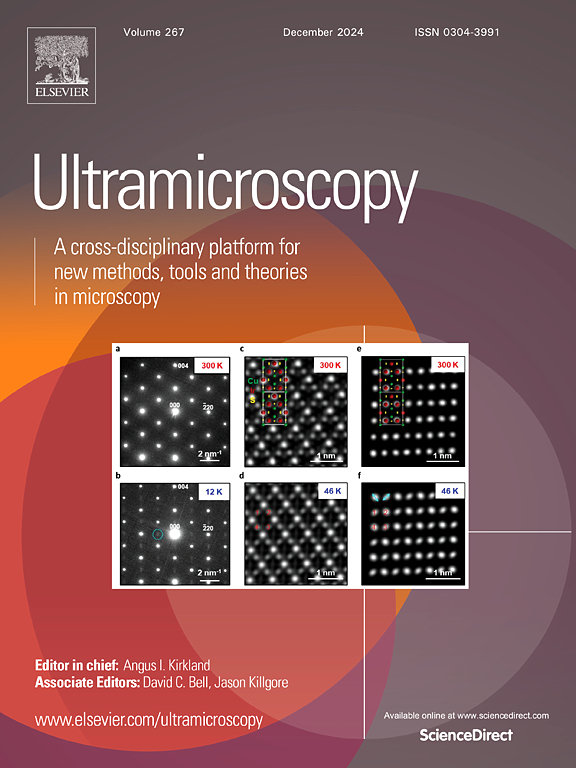Quantitative comparison of long-range electric field measurements using off-axis electron holography and 4D-STEM via differential phase contrast
IF 2
3区 工程技术
Q2 MICROSCOPY
引用次数: 0
Abstract
Phase contrast techniques in the transmission electron microscope (TEM), such as off-axis electron holography (OAEH) and four-dimensional scanning TEM (4D-STEM), are widely utilized for mapping electromagnetic fields both within and surrounding nanoscale materials. In this study, the two techniques are used to measure long-range electrostatic potentials and electric fields generated by electrically-biased colinear conducting needles. The results are compared between the two techniques and with a theoretical model. The experimental measurements obtained using OAEH and 4D-STEM via differential phase contrast reveal discrepancies in the magnitudes and distributions of the electric fields surrounding the needles. A comparison of both approaches with a theoretical model reveals that the discrepancy results from perturbation of the reference wave in OAEH by the highly extended electric field outside the needles, leading to an underestimate of the electrostatic potential when using OAEH. In contrast, the 4D-STEM measurements are more directly interpretable. We provide a theoretical background for the OAEH results, which fully explains and supports the findings.
远距离电场测量的定量比较使用离轴电子全息术和4D-STEM通过差相对比
透射电子显微镜(TEM)中的相衬技术,如离轴电子全息(OAEH)和四维扫描透射电子显微镜(4D-STEM),被广泛用于绘制纳米材料内部和周围的电磁场。在这项研究中,这两种技术被用于测量电偏共线导电针产生的远距离静电电位和电场。对两种方法的结果进行了比较,并与理论模型进行了比较。利用OAEH和4D-STEM通过差相对比获得的实验测量结果显示,针周围电场的大小和分布存在差异。两种方法与理论模型的比较表明,这种差异是由于针外高度扩展的电场对OAEH中的参考波的扰动造成的,导致使用OAEH时低估了静电势。相比之下,4D-STEM测量结果更直接可解释。我们为OAEH结果提供了理论背景,充分解释和支持了这些发现。
本文章由计算机程序翻译,如有差异,请以英文原文为准。
求助全文
约1分钟内获得全文
求助全文
来源期刊

Ultramicroscopy
工程技术-显微镜技术
CiteScore
4.60
自引率
13.60%
发文量
117
审稿时长
5.3 months
期刊介绍:
Ultramicroscopy is an established journal that provides a forum for the publication of original research papers, invited reviews and rapid communications. The scope of Ultramicroscopy is to describe advances in instrumentation, methods and theory related to all modes of microscopical imaging, diffraction and spectroscopy in the life and physical sciences.
 求助内容:
求助内容: 应助结果提醒方式:
应助结果提醒方式:


